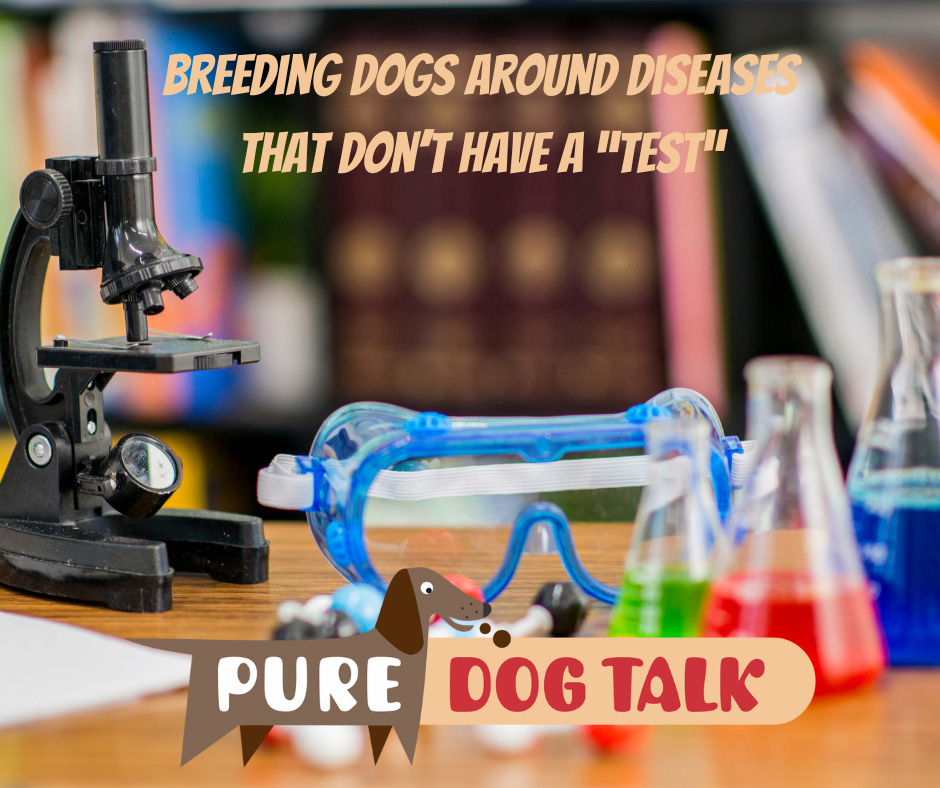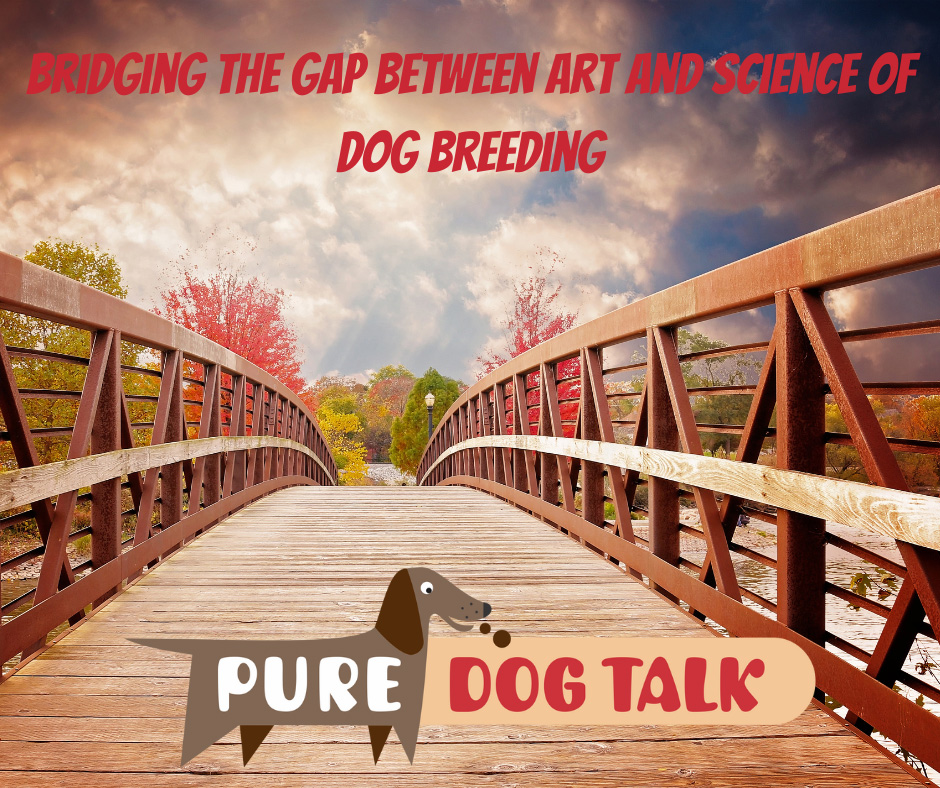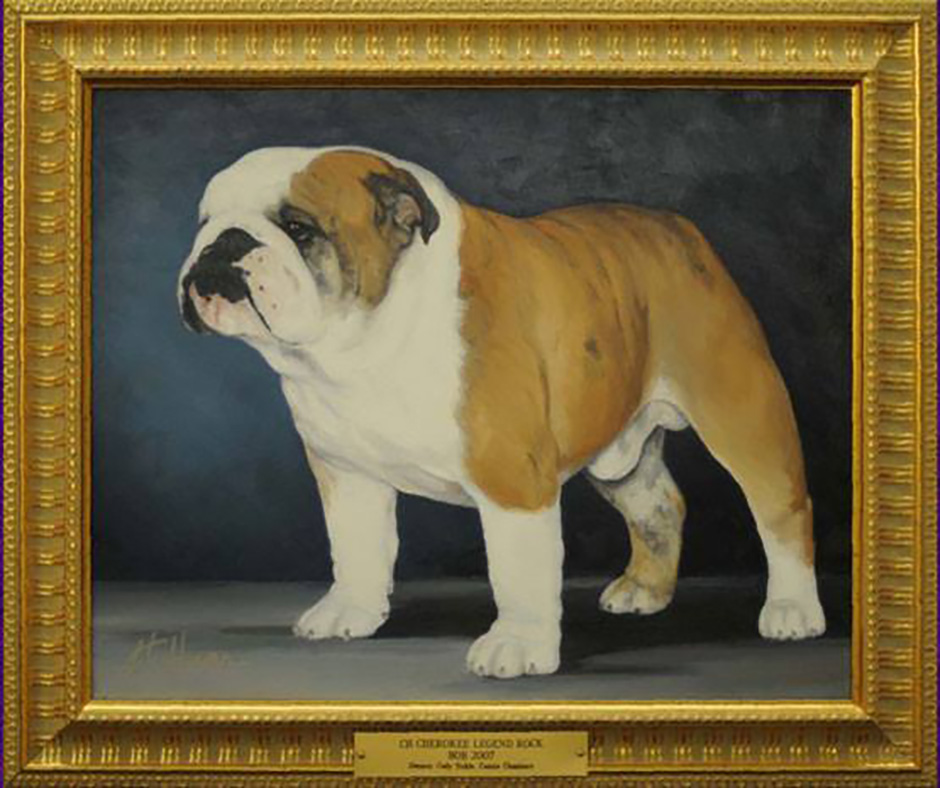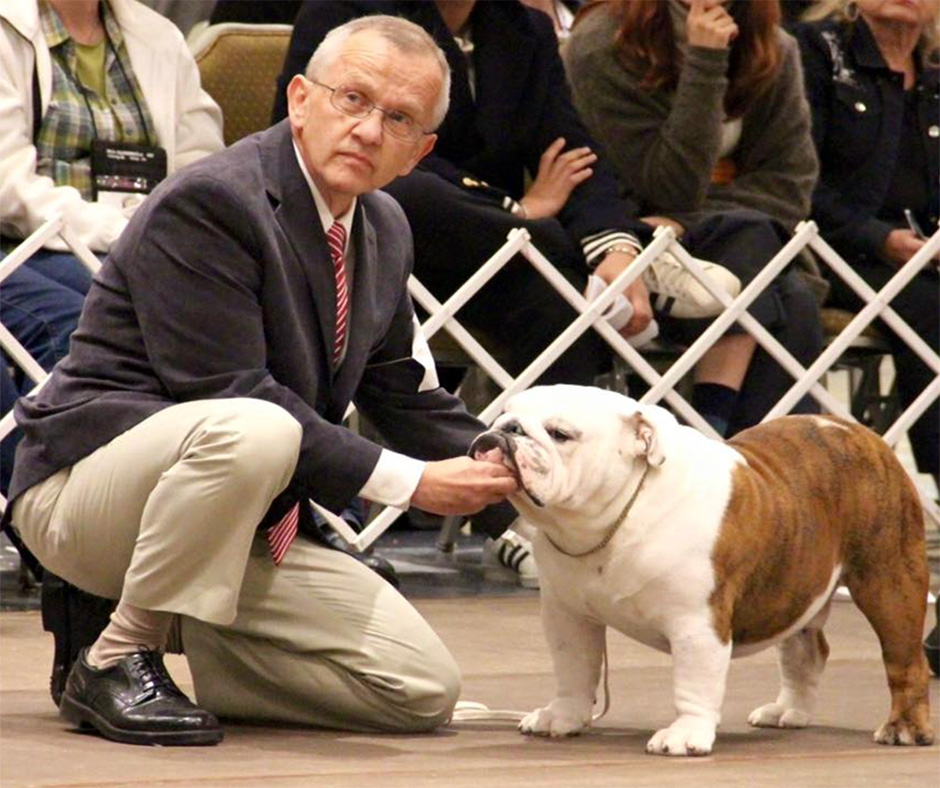656 — How Breeds Have Managed Population-wide Health Crises
How Breeds Have Managed Population-wide Health Crises
Host Laura Reeves is joined again by Aimée Llewellyn-Zaidi, Project Director, IPFD Harmonization of Genetic Testing for Dogs at the International Partnership for Dogs. The wide-ranging conversation covers how different breeds have managed population-wide health crises.
Llewellyn-Zaidi discusses specific issues with Irish Setters in the UK and Pointers in the US, as well as Cavalier King Charles Spaniels and French Bulldogs in Finland. She also uses knowledge of the inbreeding in dairy cattle to address some of our questions about the potential of “inbreeding depression” in dogs.
“Education is us making the best decisions we have with the information we have in that moment,” Llewellyn-Zaidi said. “And then where those unintended consequences can go wrong. Bear with me, I’m going to pivot from dogs for just a minute and talk about the dairy cattle industry because I think that is a great warning to the dog breeding world about what we want to keep in mind when we’re making our breeding decisions. (This gives insight into) how we might want to work collectively to solve some of these problems that we’re all facing and also collectively how we might want to achieve the goals and the positive traits and positive characteristics we have in our breeding stock.
“The dairy industry historically had a philosophy of not particularly using a wide number of stud bulls. Their goals when they’re breeding dairy cows are not our goals when we’re breeding dogs. They’re wanting to produce animals that have a very specific trait characteristic, but also are not required for longevity. Generally speaking longevity is kind of a priority for dog breeding. So they had two challenges with that and that if you don’t include longevity or if you are removing those cows at a certain age before their natural lifespan would end then you don’t really know what may be coming into middle or older age.
“There’s a study in 2015, so 10 years ago, where they looked at where the genesis of modern American dairy cattle came from. They realized that all of the American dairy cattle at the moment descended from two bulls from the 1880s. Those were the bulls’ lineages that have survived various breeding strategies over the years.
“If you are a livestock nerd or if you’re interested at all in dairy cattle, you probably have heard of Toy Story, who sired over half a million offspring and he’s within living memory. What’s interesting and, harkening back to our previous conversations again about genetic diversity, funnily enough, in dairy cattle, they started noticing that infertility issues were coming into dairy cows.
“What they didn’t think about or they didn’t really maybe appreciate how inbred those female cows were as well. Because essentially Toy Story was breeding over and over and over and over and over again with his daughters and granddaughters and nieces. So the inbreeding was compounding and they were already inbred to begin with.”
Listen in to hear Llewellyn-Zaidi’s conversation about how different breeds and clubs have solved health issues and genetic diversity questions in positive and constructive ways. And don’t forget to tap in next week for part two.
655 — Nancy Talbott on Dual Dogs and Breed Specific Judging
Nancy Talbott on Dual Dogs and Breed Specific Judging
AKC judge Nancy Talbott joins host Laura Reeves for an in depth discussion on the philosophy of dual purpose dogs and breed specific judging.
“I didn’t really embrace or understand the significant division between show and field until I started showing more and conformation,” Talbott said. “And then it started to really strike me, and increasingly, and continuing to strike me at just how extreme, not just conformation and conformation breeders, but also field and field breeders had become. The word extreme should never be in the vocabulary about a Golden Retriever in any way, physically, mentally, energy level, any of that.
654 – Corporate Takeover of Veterinary Clinics
Corporate Takeover of Veterinary Clinics
Dr. Marty Greer joins host Laura Reeves for a very current conversation about corporate takeover of veterinary clinics.
“The trend to purchase veterinary clinics has been going on for probably about 12 to 15 years,” Greer said. “It started with just a couple of consolidators. It’s now up to about 80 and some of the consolidators have consolidated. So we now see some of these groups recapitalizing and then moving on and being sold to another consolidator.
“So it’s been kind of interesting to watch and frankly pretty scary. Just before COVID, the prices of veterinary clinics were at an all -time high, and then it dropped during COVID.
“They tell you that they will give your staff better benefits, and they probably do. They tell you we will unload all that stuff off of you that you don’t want to deal with. The HR, the purchasing, all the back-office stuff that you as a veterinarian didn’t go to vet school for, didn’t learn in vet school, don’t want to learn, don’t want to know, don’t want to deal with.
“They’ll say we’re gonna lift all this off your shoulders, you can just practice medicine, it’s gonna be awesome. And if you’re a large producer in the practice, the owner or one of the bigger producers, they want you to stay for two years.
“It has different impacts in different practices. The practices that we’ve really watched the most closely personally are the practices that have done a lot of reproductive services in our community, either in our immediate area or across the country because these are colleagues of ours.
“And that to me has been really hard to watch because a lot of the practices have not continued to thrive after the sale of the practice.”
Marty and Laura continue with a conversation about how breeders can work with the larger community to help change the conversation about dog breeding that trickles down to the people who become veterinarians.
653 – Back to Basics: What to Wear at the Dog Show
Back to Basics: What to Wear at the Dog Show
Veronica Wolfe from Best in Show Clothes joins host Laura Reeves to talk just basic what to wear at the dog show, how to be comfortable, how to live your own truth and still be respectful of the environment that we’re in. They cover outfits for the fall weather’s coming up and a little bit about good colors with your dogs and stand out versus blend in.
“So, when my junior was becoming a teen and bucking the suits, I reminded her that this is a sport like any sport and every sport has a uniform,” Wolfe said. “I mean, if you’re going to be in the soccer team, you get assigned a uniform and there’s no, ‘oh, well, it’s not my color,’ too bad, you know, that’s what you have to wear. But fortunately, in the dog show world, we have a little more flexibility.

Tall, flat heeled boots, a skirt, vest and turtleneck make a classy fall outfit.
“Looking professional is the key. Well, what does that mean in the dog show world? Classically, men will be in two -piece suits, or slacks, and maybe a tweed blazer for fall, right? And the women will either be in professional dresses or a two -piece suit, whether it’s a pantsuit suit or skirt suit. That’s the general uniform that you see out there.
“Alternatives to blazers because we were kind of talking about dressing to your truth right so not everybody wants to be in a blazer.
“I personally hate blazers. I’ve got broad shoulders, busty, and I’m tall. They’re not my favorites.
“So a lot of things I like to find and more than ever you can find stretchy fabric like this one actually has some stretch to it just look for spandex in the list of fabrics. Cardigans look great. A navy blue cardigan with a floral skirt … you can find some really nice cardigans and you can find them in every color of the rainbow
“The other thing you need to consider is your movement when you choose what you’re going to wear and you also need to consider what looks good with your color and your dog’s color.”
652 – Breeding Dogs Around Diseases that Don’t Have a “Test”
Breeding Dogs Around Diseases that Don’t Have a “Test”
Host Laura Reeves is joined for part two of her impactful conversation with Aimée Llewellyn-Zaidi, Project Director, IPFD Harmonization of Genetic Testing for Dogs at International Partnership for Dogs.
Today’s conversation covers some of the biggest hot button diseases impacting all dogs – seizure disorders, cancer, bloat and other life-threatening issues.
Llewellyn-Zaidi offers insight, information and details about new tests coming online and the ways we can minimize risk while working with small gene pools.
“(S)ome cancers are just kind of part of dogs, just being a dog. Or sometimes they’re part of being a type of a dog, like some types of dogs are more likely to be at risk than others, whether it’s size -related or maybe they’re a herding breed, and it’s just at some point in ancient times, (when we) started dividing out into generalized proto-breeds, when we started having our wolfie looking ones and spitzy -looking ones, and we started having our molosser looking ones, and we started having our retrieving looking ones. Before they were such distinctive breeds, there would have already been selection causing inbreeding and increasing some genetic duplication to get those desirable traits.
“And you may bring some things along with that. So some of these cancers are not specific, necessarily, to your breed and they’re just specific to that type of dog.
“With cancers there are two cancer tests that are available to all dog breeds or all dog types. There is something called a C -kit somatic mutation for mast cell tumors. All of this is on www.dogwellnet.com so you can check it out. And there’s also the BRAF mutation, so invasive transitional cell carcinoma. That’s for all dogs as well. And for my dear beloved Bernese people, there’s histiocytic malignancy that’s available as a genetic test as well.
“So for some of these specific cancers and specific epilepsies, there are genetic tests available that you can use to help you maybe make some decisions or at least to eliminate what might else be going on, right? So you know if you’re not quite sure what kind of a cancer it is, the genetic test might help give you some information on that.
“All of this really comes down to how risky do you feel? We can rebuild any breed from scratch if we needed to. It would just take a lot of time and a lot of effort and a lot of consideration. So in some ways, being very radical, and I’m setting health and welfare aside for just a second, being very radical, it’s kind of up to a breed to make a choice. Do you want to keep breeding to your breed standard until you reach a point of too much poor health and inbreeding depression and then you start again?
“Or do you want to try to conserve and maintain kind of where you are now? Or do you want to try to improve or expand your genetic diversity from where you are now?
“And all three of those kind of philosophies are acceptable, assuming you’re keeping at least welfare in mind. And all three of those philosophies probably will fit all the different kinds of breeds in their unique situations.
“Followed very closely by conserving that breed type or those breed qualities that are important to you, right? That’s the point. That’s the point and the pleasure and the art side, right?
“So if you’re keeping in the back of your mind those chess moves, whether it’s ‘I’m gonna use this type for a couple of times because I really like that or I want to introduce that and then I’m gonna have a couple of litters where I go out and just kind of rebuild that diversity and then maybe go back to that type I happened to like,’ that’s how you kind of weave through the genetic variation that you have within your breed population.
“You probably can’t do that forever unless you’re very, very lucky as a breed, like you can’t do that forever, but you can probably do that for quite a long time.”
651 – Bridging the Gap Between Art and Science of Dog Breeding
Bridging the Gap Between Art and Science of Dog Breeding
Host Laura Reeves is joined by Aimee Llewellyn Zaidi, project manager for the International Partnership for Dogs. Llewellyn Zaidi’s work is bridging the gap between art and science in dog breeding. They talk about inbreeding and genetic diversity, how those things go together and what you can do when there isn’t a test for a health problem.
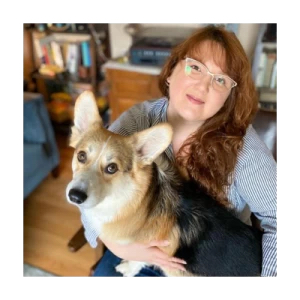
Aimée Llewellyn-Zaidi and her Corgi.
“International Partnership for Dogs offers free resources for dog breeders and for vets to kind of give you some unbiased transparent guidance,” Llewellyn Zaidi said.
“I am a third generation Pembroke Welsh Corgi owner. My grandparents had beef cattle in Oregon in the 1960s. They started their farm up in Silverton, Oregon. And my grandmother was a little bit of an Anglophile. And so she got two corgis back in the 70s in Oregon, which there weren’t too many corgis out here then.
“And she had these great aspirations of having them being working corgis and they worked really hard at cuddling. And they maybe, you know, barked at things, but yeah, they started as working dogs but were 100 % professional lap dogs, you know, as corgis really know how to do it. And I just never lost my love for the Pems.
“I started working as a health manager for the Kennel Club in the UK (in 2012). And by the end of my time in the UK, I had developed a team and I was the head of health and research there, really focused on bringing evidence-based education resources to breeders and to the veterinary community and to breed advisors with lots and lots of tools and resources available.
“I really wanted to take the science and kind of translate it into something practical. There wasn’t a lot of in between at the time between researchers and the people who actually have to make the breeding decisions and that disconnect really bugged me. I think it really bugged me that there wasn’t such an easy way for communication between really the art and the science of dog breeding, trying to bring those things a little bit closer together.
“I want to take some of the mystery out of some of science or some of the resources that are available. I try to be really honest and transparent about what we know, what we don’t know, what’s still kind of out there, what things might be not the most ideal resources.
“I feel like that honesty is the best way for people to be informed and to make ultimately the breeding decisions. You guys have the hard job. You have the job of deciding, right? So, I just want to give you information that can help you hopefully make those really informed decisions.”
650 — Breeding a “Star” requires depth of knowledge
Breeding a “Star” requires depth of knowledge
Join host Laura Reeves for part two of her conversation with Cody Sickle, Cherokee Legend Bulldogs, breeder of Star, GCH Cherokee Legend Encore, BIS at the 2022 AKC National Championship.
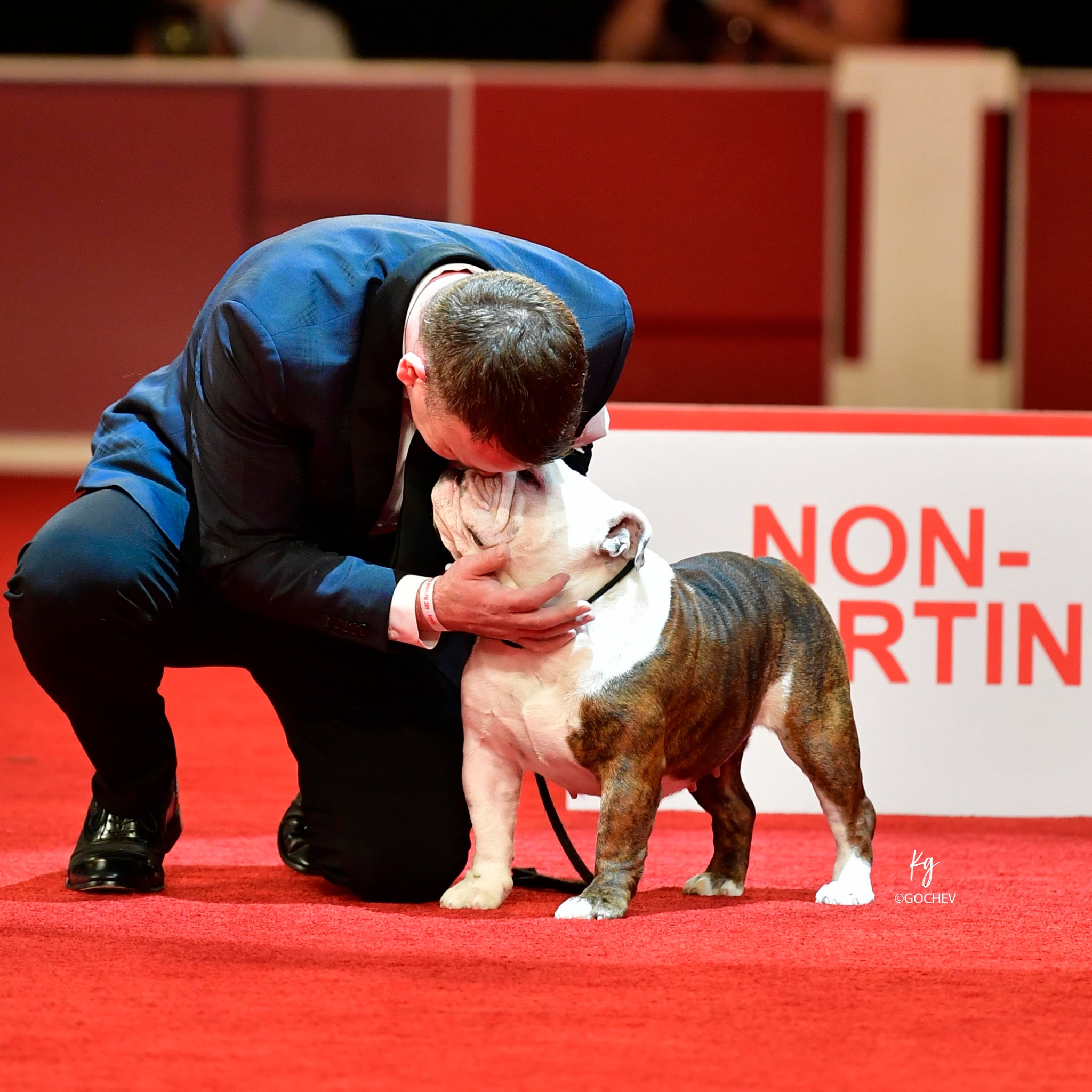
GCH Cherokee Legend Encore, “STAR”. Breeders-Cody T Sickle, Connie Chambers and Sherry Hazelett
Owners- Alaina Moulton, BJ Whitlow, and Kevin & Natalie MasonLe
“I think there’s a lot of things to think about in breeding,” Sickle said. “I think one of the things to really focus on in breeding is watch what everybody else is doing. Just like in picking puppies, knowledge makes a difference. Knowledge makes a difference in this too. Look who’s breeding successfully.
“I think most breeders would actually be better if they never owned a stud. Because I don’t think most breeders have the fortitude, the self-control, not to think they’re going to make their own stud famous. I think the best breeders think in terms of ‘I don’t care who owns this dog, if I think there’s a stud out there that will improve my breeding program, even if I don’t care for the people that own the dog at all, doesn’t matter. I’m not marrying them, I’m breeding to their dog’.
“And when you do a breeding, be honest about it. When I do a breeding, I don’t have the idea that, well, I’m going to keep the best this or that out of the breeding. I don’t think of that. I’ll keep the best out of it if it’s good enough. But just because it’s out of two dogs that I have a high regard for if the puppies aren’t good enough, move on.
“We will frequently do grandfather to granddaughter breedings. I’ve only once done a brother and sister breeding. And it turned out to be wonderful, but they were the only brother and sister I’ve ever seen in our breed that I would have considered breeding together.
“We’ve been fortunate to have good studs. And a good measure of that is the last 40 years for the national specialty at least one Cherokee stud is behind every single breed winner. And that impresses me. And a lot of the record stuff doesn’t impress me.
“I think the future of Bulldogs in general is good. Bulldogs are a wonderful family dog. Not every family, you know, if you’re a family of athletes who’s going to go out running the marathon every weekend, Bulldog’s not the right dog. If you want a dog that is going to be a terrific family pet, love everybody, get along with everybody. A bulldog is an excellent dog. They’re just nice dogs.
“I think we are so fortunate to have the sport of dog shows. For a lot of us, it’s a major part of our lives and has been for the major part of our lives. But I like the dogs, I like the competition, I like the people, I like the camaraderie. There’s no place that I feel more comfortable than a dog show, and that’s because of the people for sure, and as much complaining as we see on social media, I think it’s a wonderful sport.”
649 – Veterinary Advice on Free Whelping Following C-Section
Veterinary Advice on Free Whelping Following C-Section
Dr. Marty Greer joins host Laura Reeves for a deep dive on the question of when your female has had a C-section and you breed her again. Is it safe to have the bitch whelp her puppies naturally? This question comes from a listener request.
“The most important thing to ask is why did you have a C-section in the first place,” Greer said. “If you had a C-section in the first place, because she’s a Bernese Mountain Dog or because she’s a Bulldog or a Frenchie or maybe a Clumber or a Corgi, some of the breeds that are more commonly having their puppies by c-section, you still have a Clumber or a Bulldog. They didn’t change breeds while they were pregnant, so that’s the most important reason.
“Secondly. What were the other reasons? Did she just have too many puppies? If she had 14 and she’s going to have eight this time, yeah, that’s a whole different conversation. If she had a puppy that was oversized or misdirected, that’s a different conversation. But it’s going to depend on what happened previously. So you really need to have a good history on what went on when this last C-section was done.
“Statistically, according to the numbers, 75% of the time the bitch has the C-section because of a bitch cause and 25% are a puppy cause. So that kind of gives you some numbers to work with is 3/4 of the time you’re probably going to need another C-section, but 1/4 of the time it was an anasarca puppy, it was a misdirected puppy, it was oversized, it had some other kind of a birth defect, two were coming at the same time, so you had a log jam. I mean you just have to try and sort that out.
“That’s the general thought. It’s “V-back” on the human side, it’s vaginal birth after C-section, V-back. So most of the time you absolutely can go ahead. From a safety perspective, there’s reason to believe that it’s going to be unsafe. You assume that the veterinarian did a nice job closing the uterus.
“What I always kind of laugh about is when veterinarians say, ‘ohh, the uterus was paper thin when I did her C-section. You can never have another litter.’ OK, you take a uterus and you put 14 puppies in it and you stretch it out like a pair of old pantyhose and you wonder why it’s paper thin. It’s supposed to be thin. That’s the way your stomach looks after Thanksgiving dinner. That’s the way your bladder looks when you need to go to the restroom. That’s the way the organ works. It stretches out and it becomes thinner, but that doesn’t mean that it’s so thin that she can’t have a normal pregnancy and a normal vaginal birth.”
648 — Cody Sickle: Knowledge is the Key to Success
Famed Bulldog breeder-owner-handler Cody Sickle joins host Laura Reeves for the first of a two-part series on owner-handlers, dog shows, Bulldogs, breeding and camaraderie.
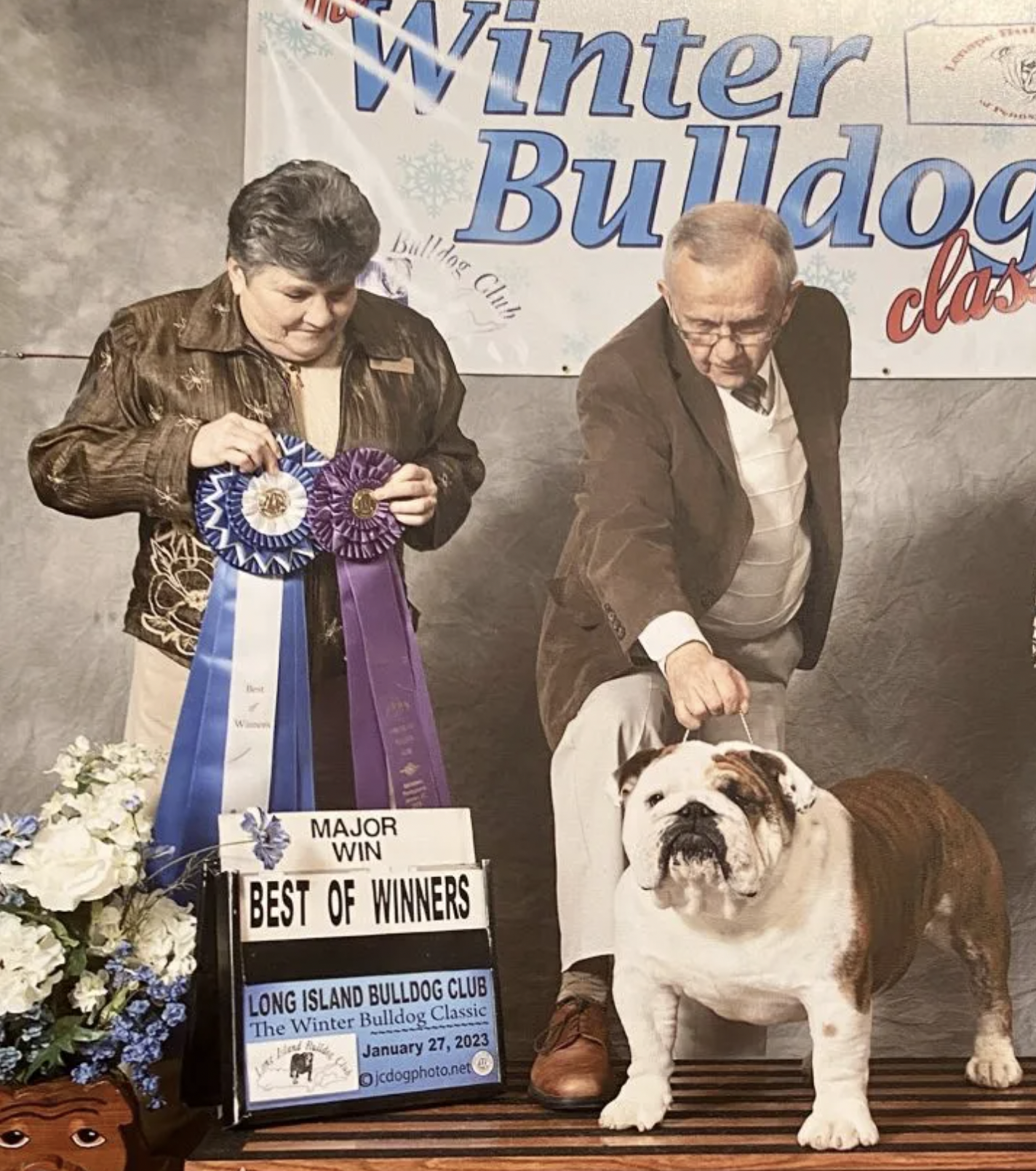
CHEROKEE LEGEND NOR’EASTER DEREK
Long Island Bulldog Club Specialty. Winners Dog & Best of Winners. Judge: Phoebe Booth
Sickle’s renowned Cherokee Bulldogs have quite a record. According to his records, he has bred or owned 256 Champions, more than any other Bulldog breeder ever in the USA. His dogs have won 99 All Breed Bests In Show and 591 Bests In Specialty Show, five National Specialty Bests Of Breed and 15 Westminster Kennel Club Bests of Breed. All of which rank as #1 all-time results in the breed.
Sickle says he knew he wanted a Bulldog from the time he was 5 years old. His parents said he had to pay for it himself. So he skipped going to the movies, did extra jobs, saved his allowance and finally was able to purchase his first dog for $60.
“I find the Bulldog people are terrific,” Sickle said. “They are just as you say. We go in the ring, we’re competing with each other and we’re obviously all trying to win. When it’s over, it’s over. We are all friends when it’s over. We are a good representative of what sportsmanship should be almost all the time. There are exceptions, but not very many.
“I’ve listened to people say, well, you know, the Bulldog people are good, but this breed is not. I’m not intimately familiar with the interactions of people in other breeds. But I am very into the dog people in general and the dog people in general are helpful.
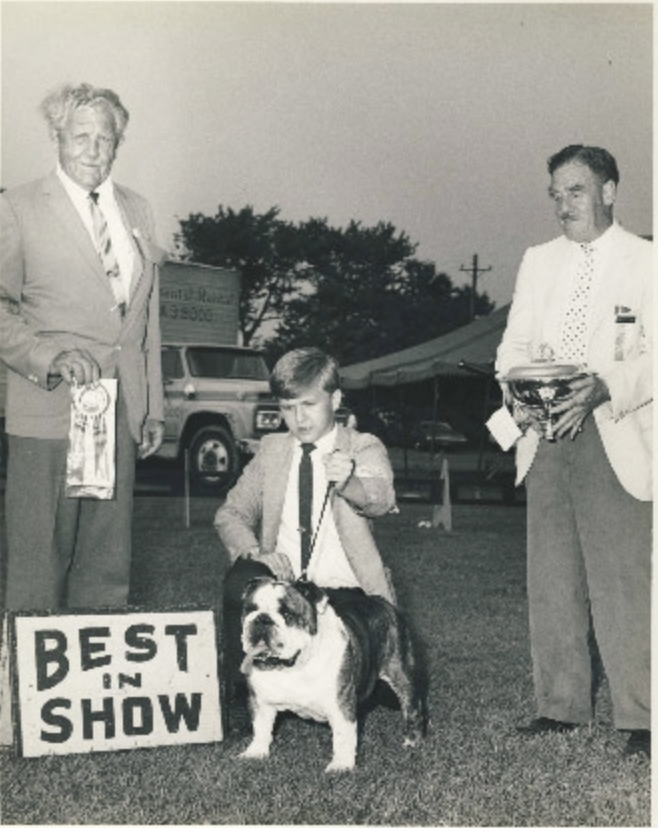
Cody Sickle with CH. CHEROKEE MORGAN. Best In Show…Penn Ridge Kennel Club. Judge: James Warwick. August 1969
“I’ve never once in my life went up to any dog person and said tell me about this or tell me about that and had them say no, not ever. And when I was 13 years old, I used to hang around the handlers. Richard Bauer when Jimmy Mitchell was his assistant. Wendell Sammett when Paul Edwards was his assistant. Peter Green, the Forsyths, they were all terrific. They were all perfectly willing to share their knowledge. They’re perfectly willing to answer all my questions, and my questions were incessant.
“The Bulldog people were the same way. One of the benefits about the Bulldog people being good people is that, in order to learn I think it’s necessary to speak to lots of people. Because people have different views. Some people just can’t communicate what you’re trying to learn and sometimes whatever they’re saying, even though it’s just right on, it doesn’t register properly. So if you ask everybody and work at weeding out what sounds like nonsense and keeping what sounds like it’s valuable, you’re going to learn a lot more.”
647 – Building Blocks to Success in the Ring and the Whelping Box
Building Blocks to Success in the Ring and the Whelping Box
Host Laura Reeves is joined by breeder-handler Christian Rutten in part two of a wide-ranging conversation touching on some of the critical building blocks to success in both the show ring and the whelping box.
On Owner Handler vs Professional Handler
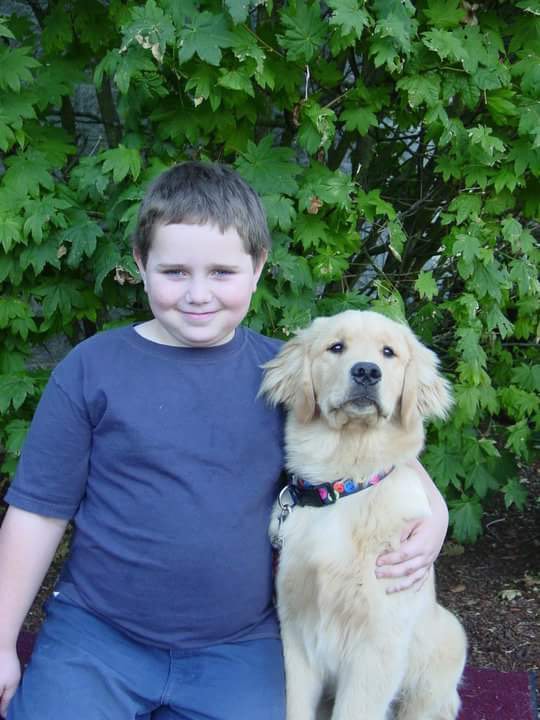
We all started somewhere. Christian reminds us we are all at a dog show for the same reason. To win and to have fun with our dogs.
“One of the things people say is ‘I just went to a dog show for 10 straight shows and I didn’t get any ribbons. And that it’s all political. And the handlers have the upper edge.’ I did the math because I was at a big string of shows and I walked in the ring 28 times and won two majors. This (other person) didn’t go into the ring 28 times in the year and she didn’t win any majors. So (handlers) have the opportunity to present a lot more dogs. So, although it looks like we’re receiving a lot more ribbons, but we’re also going to a lot more shows.
On Selecting Judges
“There are judges who I’ve taken a barrage of type and styles to over a multitude of times, and I can never get past them. And that’s fine. I just don’t necessarily want to ever exhibit under them again. And there’s other judges who are consistent as all get out. And you’ll say, well, they’re judging in North Carolina today and you look at their results and they put up litter mate to what you showed to them the week before that went winner’s bitch. And so I think finding that kind of balance of knowing what those judges are going to put up, if you can bring that to them every time, they’re going to love it.
“For me, there’s probably 20 people that I really seek out to show what I think are the best of what I have. The rest of them are just there and just kind of doing their thing, right? I don’t want people to get burned out on the fact that maybe they’re not winning, maybe they shouldn’t, right? That’s fine. But maybe they’re mentor says this is a great one. And what’s holding you back is your ability and the judges you’re exhibiting to. And once you figure that out and you find the right judges who appreciate that style, you’ve got the golden ticket. It’s a fine line between understanding that not everybody who’s putting the finger are experts. You need to become an expert yourself first and do this for yourself. And then from there, that’s when the success comes.
“I think that people, they want The Polar Express ticket to dreamland instead of just take the train and enjoy the view and the destination is worth it once you get there.
On Dog Show Basics

Christian brings basic husbandry and manners to the forefront of the conversation.
“First one is you never leave a dog on a table unattended. Seems like a very simple thing to a lot of us, but some people are never taught that. The second thing is don’t leave dogs in ex pens unattended. You’re asking for a disaster to happen. I see this from owner handlers to breeders to professional handlers.
“The other thing is, and this is a big one for me, and I kind of thought it was standard and I’m seeing it less and less. Congratulate the winners. I have probably walked into, I couldn’t tell you, thousands of rings from juniors as an owner handler, as a breeder owner handler, as a professional handler. I could maybe count on one hand the amount of times I didn’t say congratulations. If you’re in a full group, whether it’s the owner handler group, or the regular group, you don’t have to shake everybody’s hand, all you got to do is walk up to the winner and say Congratulations.”





